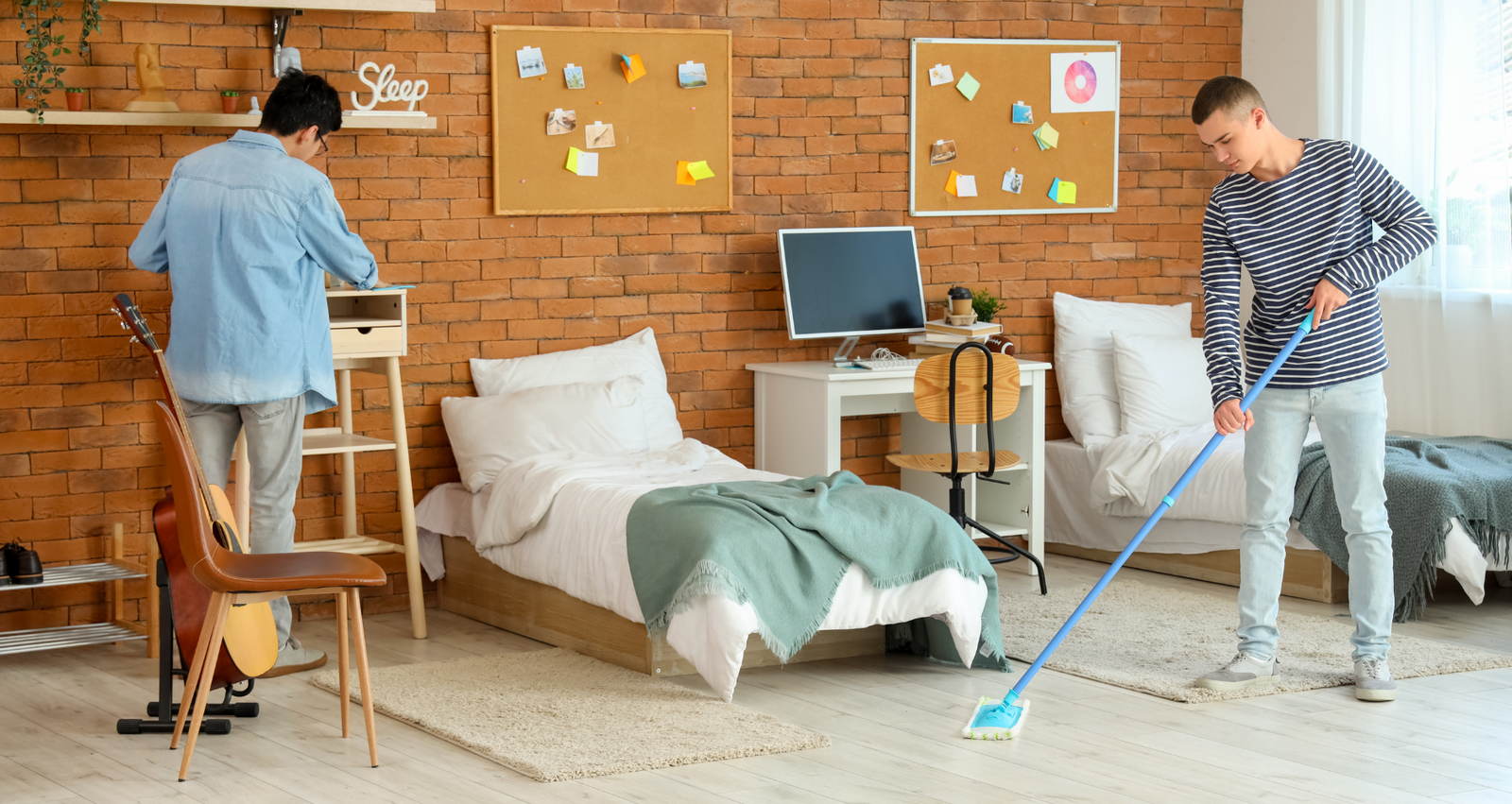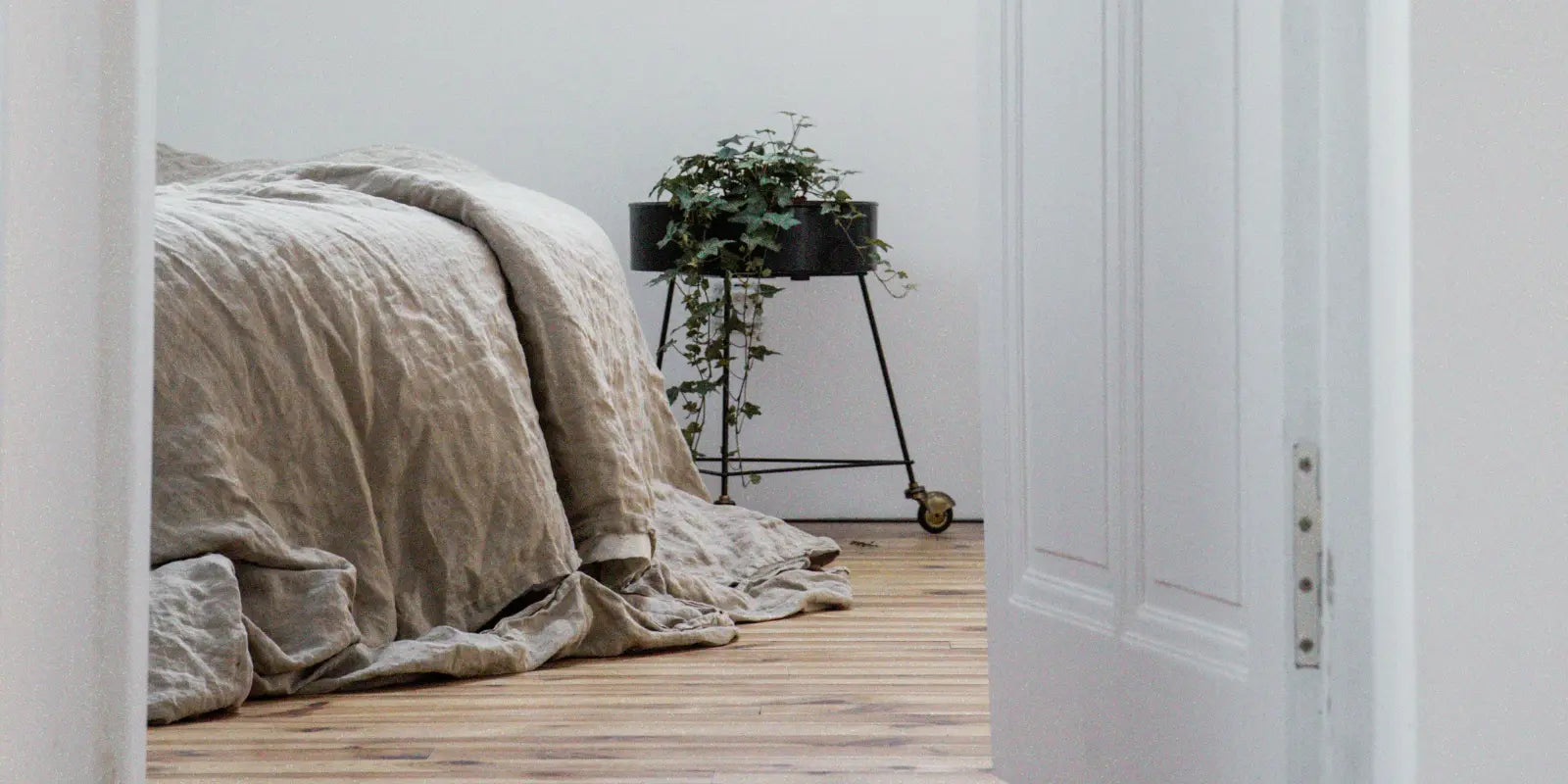Your Cart is Empty
Menu

10 Steps for Creating a Healthy College Dorm Room
August 09, 2024 4 min read

As families with college-age kids prepare for the big move, ensuring a healthy college dorm room is often a top priority. Move-In Day is an iconic family event, and while packing up the car and checking off the Dorm Essentials list, it's important to consider ways to reduce your college student’s exposure to toxic chemicals. Here are some practical and friendly tips to create a healthier living space for your student.

1. Bedding: Choose Cotton and Oeko-Tex Certified Options
Standard dorm mattresses are usually Twin XL, which can be hard to find bedding for. However, we have many Twin XL Topper options that are 100% cotton and Oeko-Tex certified. This certification is one of the strictest environmental certifications available, ensuring reduced toxins in the textiles. Investing in high-quality, chemical-free bedding can significantly improve your student's sleep quality and overall health.
For the ultimate upgrade, replace the standard plastic dorm mattresses with a Twin XL Shikibuton mattress, made entirely of all natural materials. Avoid off-gassing, chemical flame retardants, and PFAS by sleeping on natural latex, wool, and cotton.
2. Personal Care Products: Skip the Chemicals
Teenagers and young adults often use a variety of personal care products. Follow clean skincare principles and check ingredients to find less-toxic personal care products for tweens and teens, and make sure to pack plenty so they have them on hand when school gets busy. Buying extras during visits or sending some along in care packages ensures they always have access to healthier options. Look for products free from parabens, sulfates, and synthetic fragrances.

3. Laundry: Lighten the Chemical Load
Traditional laundry detergents can contain harsh chemicals. Send your student to college with a supply of less-toxic laundry soap, and replace it during visits. Consider wool dryer balls as an alternative to chemical-laden dryer sheets; they naturally soften clothes and reduce static. Encourage your student to avoid fabric softeners and opt for a small amount of white vinegar as a natural alternative.
4. Coffee Maker: Enjoy Caffeine without Chemicals and Waste
If your college student insists on a K-cup coffee maker for that early morning cup of Joe, opt for one with a reusable filter insert. This allows them to use ground coffee instead of plastic K-cups, reducing waste and exposure to potentially harmful chemicals. Let your student know this option will save them money, too! For an even healthier and almost as convenient option, consider a single-serving ceramic coffee cone with unbleached paper filters.
5. Hot Water Kettle: Choose Stainless Steel Over Plastic
For students who prefer tea to coffee, a stainless steel electric kettle is a healthier choice than a cheaper plastic one. Although the initial cost is higher, stainless steel kettles are more durable and don't leach chemicals into the water. This small investment can have a big impact on your student's health.

6. Air Quality: Freshen Up the Dorm Room
Improving air quality is crucial for a healthy living environment, especially in dorms where many students congregate and particles are circulated throughout shared living spaces.
- Air Purifiers: A small air purifier in a dorm room can help reduce dust, allergens, and pollutants, creating a cleaner and healthier space.
- Houseplants: Adding a few easy-to-care-for plants, like snake plants or pothos, can naturally improve air quality and add a touch of greenery to the room, which has also been proven to lift moods - especially in a college dorm environment.
7. Cleaning Supplies: Go Green
Stock up on non-toxic, eco-friendly cleaning supplies for your student. Avoid cleaners with harsh chemicals and synthetic fragrances, and opt for products that meet the EPA’s Safer Choice Standard. Teach your student how to make simple DIY cleaning solutions using ingredients like vinegar, baking soda, and essential oils. This not only saves money but also reduces exposure to harmful substances.
8. Furniture: Select Non-toxic Options
When possible, choose furniture made from solid wood or those certified by Greenguard for low chemical emissions. Second-hand furniture can be a great option too, as it has often had time to off-gas harmful chemicals from stains and treatments. Look for pieces that are durable and free from synthetic materials.

9. Food Storage: Safe and Sustainable Choices
Encourage your student to use glass or stainless steel containers instead of plastic for food storage. These materials are safer and more durable. Additionally, avoid non-stick cookware, which can release harmful chemicals when heated. Instead, opt for stainless steel or cast iron cookware.
10. Pest Control: Natural Solutions
Dorm rooms can attract pests, and many often have pest control performed by building maintenance. In the case your student’s dorm does not do this, or has a persistent pest problem, opt for some natural solutions before turning to chemical pesticides. Use natural pest deterrents like peppermint oil for ants or diatomaceous earth for general pest control. These options are generally safer and just as effective as traditional pesticides.

Look Forward to a Greener College Experience!
By incorporating these tips and tricks, your college student can enjoy a healthier and more sustainable living environment during their time at school. Creating a healthy college dorm room doesn’t have to be complicated – with a few mindful choices, you can significantly reduce exposure to toxic chemicals and promote a healthier lifestyle for your student.
Leave a comment
Comments will be approved before showing up.
Also in Blog

10 Eco-Friendly Home Habits for 2025
March 10, 2025 5 min read
Whether it’s conserving more of the resources we use, minimizing the amount of waste we generate, or preserving our vital ecosystems, there are numerous ways to promote the well-being of ourselves and the planet we call home. With that in mind, let’s explore 10 ways to live a more eco-friendly lifestyle at home in 2025!

The Life Cycle of Our Wool: From Farm to Bedroom
January 15, 2025 4 min read
At Holy Lamb Organics, we are committed to transparency and sustainability. Our Premium Eco Wool and Certified Organic Wool products are a testament to this, crafted with ethically sourced wool that has been handled with care at every step of the journey!

How to Create a Cozy Bedroom Ambiance
November 14, 2024 2 min read
As temperatures drop, creating a cozy sleep environment becomes essential for comfort and well-being. The winter months can make your bedroom feel chilly and uninviting, but with a few intentional changes, you can turn it into a sanctuary for rest and rejuvenation!
Read MoreSubscribe
Sign up to get the latest on sales, new releases and more …

 Find a Retailer
Find a Retailer